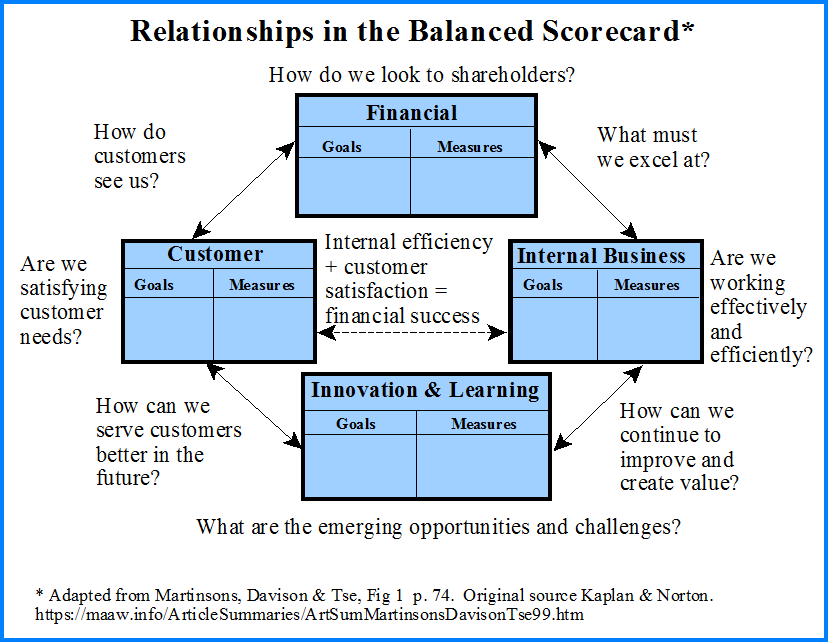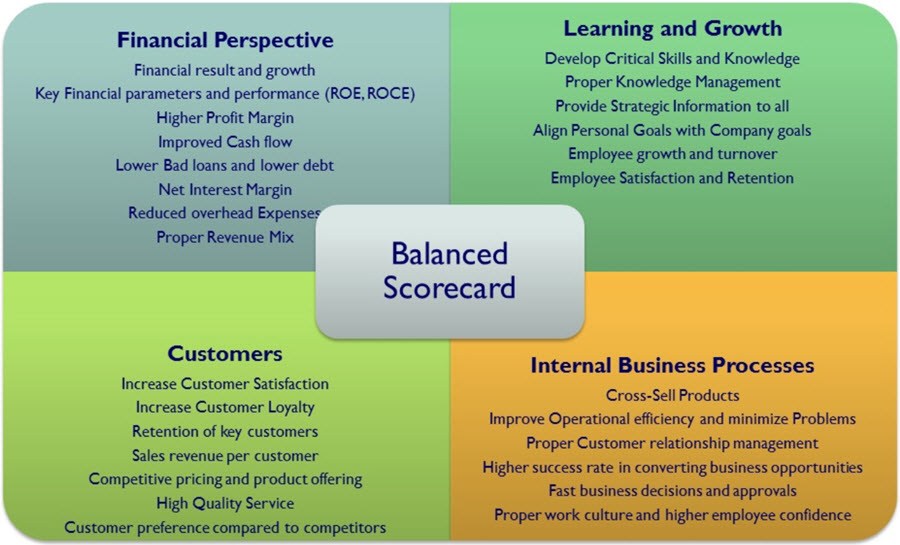There are many reasons why you should implement the Balanced Scorecard, but here is one way to look at it.
Your leadership team is responsible to some group of people: either stakeholders, shareholders, a board of directors, a council, citizens, etc. This depends entirely on the type of organization. In order to answer to this group, your team needs to ask two important backward- and forward-looking questions:
- How did we perform this past month, quarter, and year?
- How are we going to do next month, quarter, and year?
In order to answer these two broad questions, you need a management system that is able to look backward and forward (with leading and lagging indicators). You not only need to know today’s performance and measures and predict tomorrow’s performance, but you need to be able to demonstrate how your spending on strategic projects today will help you improve your impact in the future. The Balanced Scorecard is the closest management tool to a crystal ball as you will find.
The Balanced Scorecard is one of the best known strategy frameworks ever created. It's been used by thousands of organizations since the 1980s, when it was originally devised by Robert Kaplan and David Norton. It's also one of the first things you'll learn about on a business or management degree.
What is a balanced scorecard?
Here is an excerpt from the Kaplan and Norton book on The Balanced Scorecard:
“The balanced scorecard retains traditional financial measures. But financial measures tell the story of past events, an adequate story for industrial age companies for which investments in long-term capabilities and customer relationships were not critical for success. These financial measures are inadequate, however, for guiding and evaluating the journey that information age companies must make to create future value through investment in customers, suppliers, employees, processes, technology, and innovation.”
Simply put, The balanced scorecard is a fully integrated strategic management system. It is a way of measuring performance across an organization to monitor progress and set appropriate goals. It’s also a very effective tool in getting team members aligned.
The Balanced Scorecard essentially calls for organizations to create a set of internal metrics that will help them to assess their business performance in 4 key areas (sometimes referred to as 'perspectives'):
Financial
Typical scorecard metrics might include cash flow, sales performance, operating income or return on equity.
Customer
With scorecard metrics such as: % of sales from new products, on-time delivery, net promoter score or share of wallet.
Internal Business Process
This would include measuring things such as: unit costs, cycle times, yield, error rates, etc.
Learning and Growth
Examples of metrics being: employee engagement scores, retention rates of high performing staff, skill increases of staff, etc.
Your ability to learn and grow will directly dictate your ability to better manage your internal processes. In turn, as your internal processes improve, this will have a positive impact on your customers as well as directly reducing your costs. The combined benefit of this lower cost/higher customer engagement in your product (essentially sales) will lead to your end goal, increased profit and financial return.
The Balanced Scorecard isn't really about distinct perspectives, it's about the layers of a pyramid. The pyramid when built up in the right order, leads to success. When implemented in this way, the Balanced Scorecard can be immensely powerful in helping your organization to:
- Create a tangible road-map from the 'current state' to a more successful 'future state'.
- Identify major roadblocks and areas where you lack the critical competencies to proceed to the next stage.
- Articulate how your goals will directly help the organization to move upwards through the stages.
- Prioritize business activities in the order they need to be tackled to allow the most rapid progression through the stages.
- One of the most effective places where you can implement the balanced scorecard is in your strategic planning process. Arguably this is the first and most important step in full implementation of a Balanced Scorecard methodology, since it sets the foundation stones for everything that your organization will do going forward.
- Regardless of which method you choose, you'll want to ensure that each of your perspectives has a good mix of Objectives (overall outcomes), Projects (specific things you're going to do) and KPIs (measures of success). You might find that your financial perspective has more KPIs than say your learning and growth perspective, and that's totally fine, but don't let any perspective be completely devoid of any of these types of goals!


